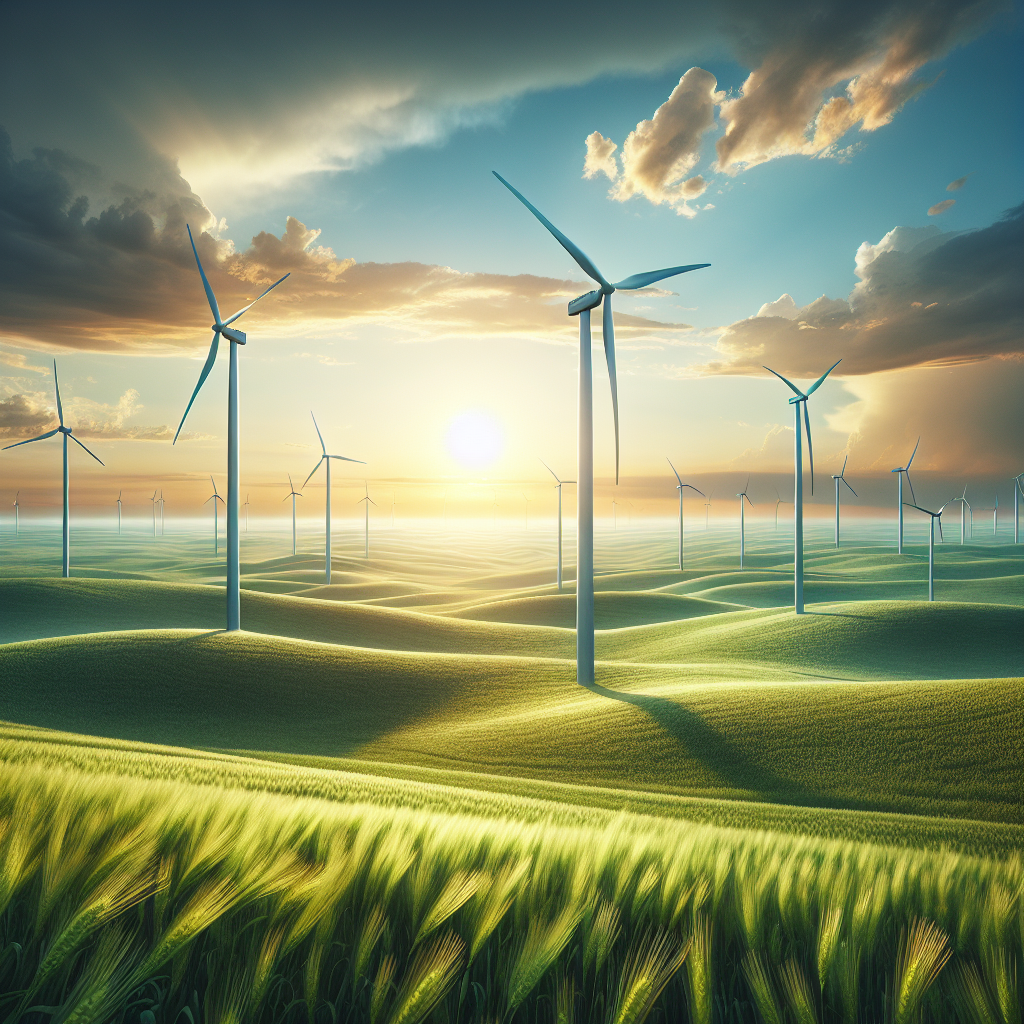Wind Power: Blowing Towards a Greener Tomorrow
The quest for sustainable energy sources has never been more urgent. Amid rising global temperatures, erratic climate patterns, and diminishing fossil fuel reserves, renewable energy emerges as a beacon of hope. Among these, wind power stands out as a particularly promising avenue. It’s clean, abundant, and increasingly cost-effective, making it a key player in the global transition towards a greener tomorrow.
The Power of Wind
Wind power harnesses the kinetic energy from wind, converting it into electricity. This process involves wind turbines – towering structures with blades that rotate when caught by the wind. These rotations drive a generator that produces electrical power. The beauty of wind energy lies in its simplicity and the inexhaustible nature of its source. As long as the sun shines and the planet spins, winds will blow, offering a sustainable energy alternative.
The Evolution of Wind Energy
The use of wind for energy is not new. For centuries, humans have utilized windmills for grinding grain and pumping water. However, the evolution towards wind turbines for electricity generation marks a significant leap. The first electricity-generating wind turbine was constructed in the late 19th century in Scotland. Since then, technological advancements have dramatically increased the efficiency and lowered the costs of wind turbines, making wind power a competitive alternative to fossil fuels.
Environmental and Economic Benefits
Wind energy is one of the cleanest forms of power generation. It produces no air pollution or greenhouse gases during operation, making it a key component in combating climate change. Moreover, wind power consumes no water in the generation process, setting it apart from other energy sources that require significant water resources.
Economically, wind power is becoming increasingly viable. As technology advances, the cost of wind energy has plummeted, making it one of the most affordable renewable energy sources available. Additionally, wind power projects create jobs, stimulate local economies, and can provide significant revenue for landowners hosting wind turbines.
Wind Power Around the Globe
Countries around the world are tapping into their wind resources, with some leading the charge towards a wind-powered future. For instance, Denmark generates around half of its electricity from wind, showcasing the potential of wind power as a primary energy source. Similarly, the United States, China, and Germany have made substantial investments in wind energy, significantly expanding their wind power capacities.
Challenges and Solutions
Despite its promise, wind power faces several challenges. First, wind generation is variable; it depends on when and where the wind blows. This intermittency requires grid operators to balance wind power with other forms of generation to ensure a stable energy supply. Advances in energy storage technologies, such as batteries, and improved weather forecasting are helping to mitigate this issue.
Another challenge is the environmental impact, including potential harm to birds and bats, and noise concerns for nearby residents. However, careful site selection, technological innovations, and ongoing research are reducing these impacts, making wind power more wildlife-friendly and community-compatible.
The Future of Wind Power
Looking ahead, the future of wind power is bright. Innovations in turbine technology are making wind energy more efficient and less expensive. Offshore wind farms, in particular, represent a significant growth area, offering stronger and more consistent winds than those on land, albeit with higher installation costs. Moreover, floating wind turbines could unlock wind power potential in deep waters, where traditional bottom-fixed installations are not feasible.
The integration of wind power into smart grids, coupled with advancements in energy storage, will further enhance the reliability and efficiency of wind energy. As policies and technologies continue to evolve, wind power is set to play a pivotal role in the global shift towards sustainable energy.
FAQs About Wind Power
Q: How does wind power generate electricity?
A: Wind turbines convert the kinetic energy in wind into mechanical power, which a generator then converts into electricity.
Q: Is wind power a reliable source of energy?
A: Wind power is variable, as it depends on wind strength, which can fluctuate. However, with improvements in forecasting, energy storage, and grid management, it’s becoming a more reliable energy source.
Q: Can wind turbines affect local wildlife?
A: Yes, wind turbines can pose risks to birds, bats, and other wildlife. However, careful site selection, monitoring, and technological advancements are helping to minimize these impacts.
Q: How much does wind power cost?
A: The cost of wind power has significantly decreased over the past decade, making it one of the most competitive renewable energy sources. Costs can vary depending on the project scale and location.
Q: What is the potential of offshore wind power?
A: Offshore wind has tremendous potential due to stronger and more consistent winds at sea. While currently more expensive than onshore wind, costs are decreasing, and technology is improving, making it an increasingly attractive option for expanding wind power capacity.
Wind power, with its vast potential and environmental benefits, is indeed blowing us towards a greener tomorrow. As we continue to innovate and overcome challenges, the wind is set to become a cornerstone of our sustainable energy landscape, powering our homes, businesses, and industries with clean, renewable energy.

